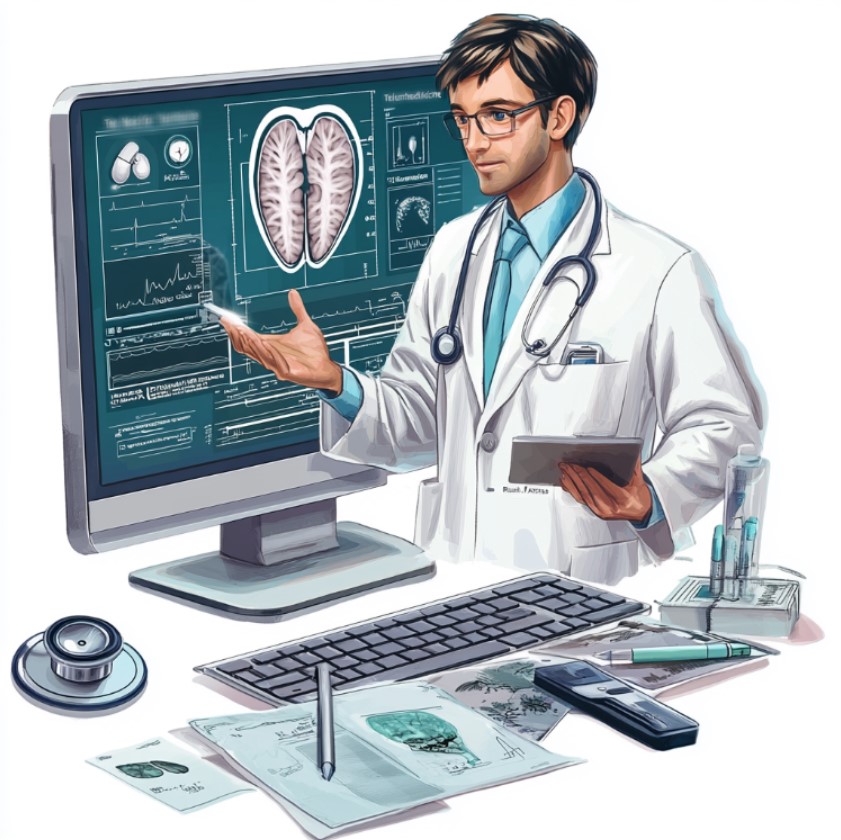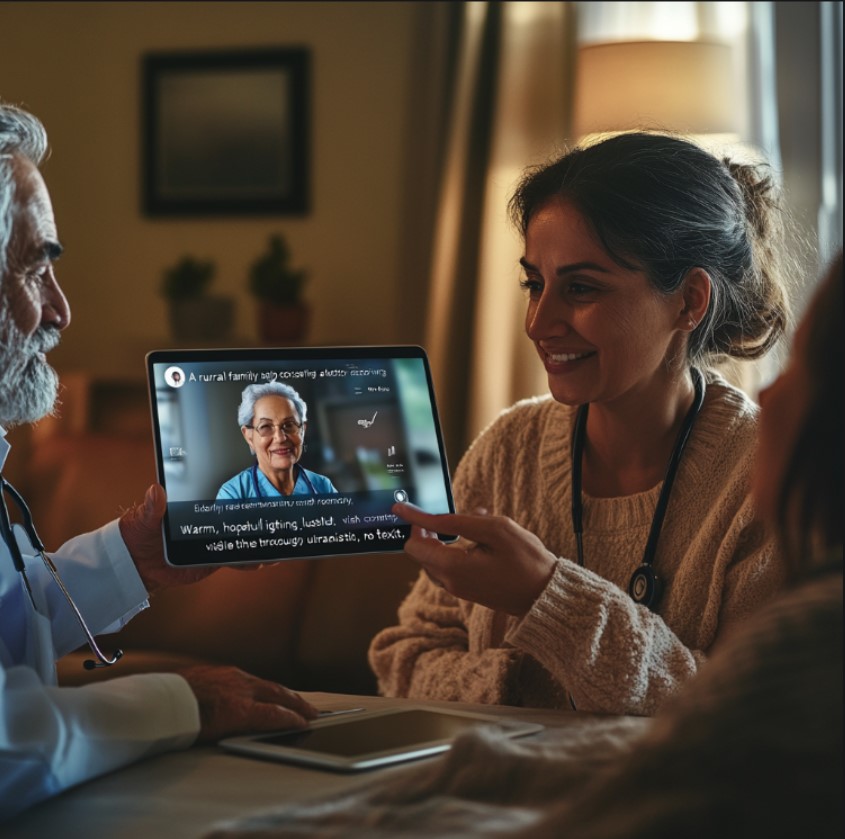Telemedicine apps have emerged as a revolutionary solution to bridge the healthcare gap in rural areas. These apps offer remote consultations, diagnoses, and treatment plans to individuals who otherwise struggle to access medical services due to distance, poor infrastructure, or a lack of healthcare professionals. In many rural regions, residents must travel great distances to reach the nearest healthcare facility, often leading to delays in care and poorer health outcomes. By leveraging digital platforms, telemedicine apps offer an alternative that eliminates geographical barriers, providing timely medical attention at the touch of a button. As the demand for mobile healthcare solutions grows, many businesses turn to an iOS app development company to create tailored telemedicine applications. This article will explore the growing role of telemedicine apps in rural healthcare access, the challenges they address, and the benefits they provide to both patients and healthcare systems.
The Need for Telemedicine in Rural Areas

Rural regions often face a shortage of healthcare professionals and facilities, making access to medical care difficult. Telemedicine apps provide a vital bridge to fill these gaps by offering remote healthcare solutions. In many cases, rural communities have a limited number of primary care physicians and even fewer specialists, making it nearly impossible for residents to get timely treatment for complex conditions. Additionally, poor infrastructure, including unpaved roads and lack of reliable public transport, further complicates access to healthcare. Without telemedicine, rural residents must often rely on emergency care, which is both expensive and inefficient. By integrating telemedicine solutions, patients can schedule virtual consultations with doctors, receive prescriptions digitally, and manage chronic illnesses from the comfort of their homes. This approach not only reduces the burden on local healthcare facilities but also improves patient outcomes through early detection and timely intervention.
| Challenges in Rural Healthcare | Impact on Patients | Telemedicine Solutions |
| Limited number of doctors |
|
|
| Poor transportation infrastructure |
|
|
| Lack of specialized medical services |
|
|
How Telemedicine Works

Telemedicine apps connect patients with healthcare providers via video calls, chat, and digital prescriptions, reducing the need for physical visits. The process typically starts with a patient logging into a telemedicine platform and selecting a service, such as a general consultation or specialist appointment. The patient then connects with a doctor via video conferencing, allowing for real-time diagnosis and treatment recommendations. Some platforms integrate AI-driven diagnostic tools that assist doctors in analyzing symptoms and suggesting possible conditions. Remote monitoring tools, such as wearable devices, enable healthcare professionals to track vital signs like heart rate, blood pressure, and glucose levels. In addition, telemedicine apps often feature electronic health records (EHRs), allowing seamless sharing of patient histories among providers. With these advancements, patients in remote areas can receive high-quality medical care without the need to travel long distances. As technology evolves, telemedicine is becoming more sophisticated, improving the accuracy and accessibility of remote healthcare services.
| Component | Function | Example |
| Video consultations |
|
|
| Remote monitoring |
|
|
| E-prescriptions |
|
|
Benefits of Telemedicine in Rural Communities

Telemedicine offers a range of benefits that improve healthcare accessibility and quality in remote areas. One of the most significant advantages is increased access to medical professionals, particularly specialists who are often unavailable in rural settings. This ensures that patients with chronic illnesses or complex conditions receive timely care without waiting months for an in-person consultation. Another major benefit is cost savings—both for patients and healthcare providers. Rural patients save money on travel expenses, accommodation, and missed workdays, while healthcare facilities reduce overhead costs associated with physical visits. Additionally, telemedicine enhances convenience by allowing patients to consult doctors from their homes, leading to better adherence to treatment plans. This is particularly beneficial for elderly patients and those with mobility issues who struggle with long-distance travel. To further streamline patient management, healthcare providers can benefit from custom CRM development services, helping them efficiently track patient data, appointments, and communication. By integrating telemedicine into rural healthcare systems, medical providers can deliver faster, more efficient care, ultimately improving public health outcomes in underserved regions.
| Benefit | Explanation | Impact |
| Improved access |
|
|
| Cost savings |
|
|
| Convenience |
|
|
Challenges of Telemedicine Adoption

Despite its advantages, telemedicine faces several obstacles that hinder its widespread adoption in rural areas. One of the primary challenges is limited internet connectivity. Many rural regions lack the broadband infrastructure necessary to support high-quality video calls, making virtual consultations difficult. In addition, digital literacy is a significant issue, as many patients and even some healthcare providers are unfamiliar with using telemedicine platforms. This creates a barrier to adoption and reduces the effectiveness of telemedicine services. Another key challenge is the regulatory environment. Different countries and even states have varying laws regarding telehealth practices, insurance reimbursement, and data privacy, complicating the expansion of these services. To overcome these hurdles, governments and private organizations must invest in improving rural broadband access, providing digital literacy training, and developing standardized regulations that facilitate telemedicine adoption. Additionally, partnering with a bespoke software development company can help create customized telemedicine platforms that address the unique challenges of rural healthcare. With the right support, telemedicine can become a sustainable solution for improving healthcare access in rural communities.
| Challenge | Cause | Potential Solution |
| Limited internet connectivity |
|
|
| Lack of digital literacy |
|
|
| Regulatory issues |
|
|
The Future of Telemedicine in Rural Healthcare

Advancements in technology and policy support are making telemedicine more accessible and efficient, paving the way for its widespread adoption. Artificial intelligence (AI) is playing a crucial role in telemedicine, enabling automated diagnostics and personalized treatment recommendations. AI-powered chatbots can provide initial consultations and direct patients to the appropriate healthcare professionals, improving efficiency. The expansion of 5G networks is another game-changer, offering high-speed internet connections that support seamless video consultations in even the most remote areas. Additionally, ongoing policy reforms are helping integrate telemedicine into national healthcare systems, ensuring better insurance coverage and reimbursement options. To meet the growing demand for telemedicine solutions, many healthcare providers are turning to a telemedicine app development company to create robust platforms that cater to the needs of rural communities. With these technological and regulatory improvements, telemedicine is set to become an indispensable part of rural healthcare, significantly enhancing patient outcomes and healthcare accessibility
| Future Trend | Description | Expected Impact |
| AI-driven diagnostics |
|
|
| 5G expansion |
|
|
| Telehealth policy advancements |
|
|
Conclusion
Telemedicine apps are proving to be an essential tool for overcoming healthcare access barriers in rural communities. By connecting patients with doctors remotely, telemedicine eliminates the need for long travel times, reducing both costs and delays in care. While there are challenges to overcome, such as internet connectivity and digital literacy, the benefits of telemedicine in rural healthcare are undeniable. Many healthcare providers and organizations are partnering with an app development company to create customized telemedicine solutions that meet the unique needs of rural patients. As technology continues to evolve and policies adapt, telemedicine will only become more efficient and accessible, further bridging the gap in rural healthcare access.
Read more: Healthcare solutions

Leave a Reply